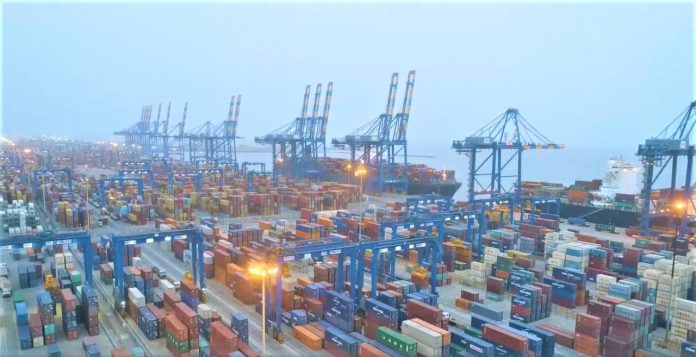Mundra Port, a non-government/minor cargo gateway in India under the Adani Group port network, has rapidly grown to become the country’s busiest container handler.
However, according to a granular analysis of port data, transshipment volumes are playing a big role in that growth, which has helped Mundra outpace JNPA/Nhava Sheva, the country’s long-time market leader in containerised trade.
Mundra has four Adani-controlled terminals, Adani Mundra Container Terminal (AMCT), Adani CMA Mundra Terminal (ACMTPL), which is a joint venture with CMA CGM Group, Adani International Container Terminal (AICTPL), which is a partnership with MSC, and Terminal 2 (T2).
In addition, DP World holds a terminal concession in the port, named Mundra International Container Terminal (MICT).
Mundra’s combined box traffic for the fiscal year 2021-22, which ended on 31 March, amounted to 6.52 million TEU, up 15% compared to the previous year. The four Adani terminals handled 5.4 million TEU in this period.
In particular, transshipment handling at Mundra last fiscal year hit 1.7 million TEU, while a year earlier the port reported 1.4 million TEU of transshipment boxes.
As a result, transshipment cargo movement represented about 31.5% of the total volume handled by the Adani terminals, according to data.
Apart from Mundra, Adani operates container facilities at the ports of Hazira, Krishnapatnam, Kattupalli and Ennore. The group’s nationwide container handling last fiscal year soared 14% year-on-year to 8.2 million TEU.
“The acceleration of our cargo volumes is a manifestation of our ability to continue to execute on our strategy,” Karan Adani, CEO of Adani Ports & Special Economic Zone (APSEZ), said in a recent statement.
He went on to explain, “Our network of ports across the Indian coastline coupled with our integrated logistics capabilities, focus on technology enabled digitised operations and, most importantly, the deep relations that we have built with our customers and partners (that include the global shipping lines), are all coming together to make APSEZ a full-fledged integrated ports & logistics platform that augments each other. We anticipate our growth to continue to accelerate given our capabilities that are now best-in-class and the tailwind of a growing Indian economy.”
In contrast, JNPA/Nhava Sheva’s fiscal 2021-22 transshipment loads accounted for some 97,000 TEU, out of 5.68 million TEU handled by the government-owned port.
After seeing strong growth last fiscal year, both JNPT/Nhava Sheva and Mundra got off to a somewhat tepid start in fiscal 2022-23. JNPT saw April throughput increase just 6.5% to 497,914 TEU, while Mundra’s combined volume slip 2% to 537,019 TEU, year-on-year, according to new figures.
Jenny Daniel
India Correspondent
Contact email: j.daniel@container-news.com







